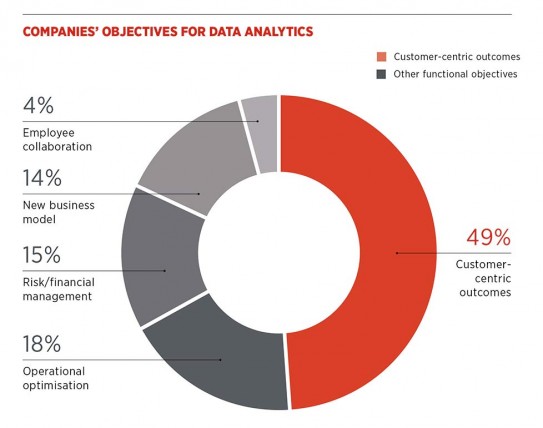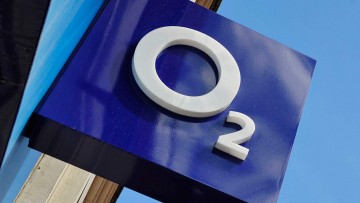It’s no longer enough to know your sort of customer or even the kinds of places they are likely to frequent. You have to know, for instance, what time your customer walks into the café every day, what they order for breakfast and where they’re going on holiday.
Luckily, that’s not too difficult. With 66 per cent of UK adults owning a smartphone, the world is at consumers’ fingertips. But that also means their data is at yours.
Personalisation, the buzzword of the moment, is now one of retailers’ key tools for increasing customer loyalty. It is driven by the multiple sources of customer data available to businesses, thanks to things like smart sensors, beacons, face and object recognition technologies, the internet of things and wearable devices.
Now it’s possible to gather and analyse more information about consumers – location, preferences, purchasing history – than ever before, offering not just customer insight, but a form of sixth sense.
Companies such as Apple, Google and Facebook are already putting to use the information that individuals generate through online buying, browsing, “liking”, swiping and commenting to anticipate their users’ wants and needs with greater accuracy.
Know your customer
Manchester-based marketing agency Origin delivers campaigns for some of the UK’s biggest brands, including the BBC, Superdrug, the Co-operative and Manchester United.
Personalised experiences are more engaging, entertaining, memorable and inspiring for audiences, which ultimately drives satisfaction, sales and loyalty
Origin digital strategist Georgia Marshall-Brown says: “The advent of digital and mobile channels has not only empowered consumers, it’s also increased the amount of data that retailers know about their customers.
“With consumers now active across a diverse mix of physical and digital retail channels, a seamless customer experience throughout the path to purchase is essential. Research from Google shows that 90 per cent of consumers now move between devices when making a purchase. If a customer shares information with their favourite brand in one channel, they expect this to be known and understood at future interaction points with that brand.”
Gaining actionable insights
Through effective data collection, companies such as Origin are able to develop comprehensive user profiles, which can be used to keep target audience preferences at the heart of all customer offers.
Customers have come to expect companies to know who they are, what they purchased and their preferences for interaction
“Personalised experiences are more engaging, entertaining, memorable and inspiring for audiences, which ultimately drives satisfaction, sales and loyalty. The results speak for themselves with 35 per cent of Amazon’s revenue generated by its recommendation engine and 75 per cent of users selecting movies based on Netflix’s recommendations,” says Ms Marshall-Brown.
But not everyone has caught on to this, says Ben Pring, co-director of Cognizant’s Centre for the Future of Work. “Businesses should explore in more detail how technology can better support their business. A study from Cognizant and Oxford Economics revealed that large numbers of businesses in Europe are not taking the necessary steps to unlock the value and opportunities provided by their customers’ digital experiences.
Missed opportunities
“Currently only 24 per cent of business executives surveyed claim to be effective at collecting and using digital customer data, meaning many are missing out on a huge opportunity to refine their products and services in line with customer preferences. By accessing this data and analysing it, companies can understand their customers better, react faster when needed and, crucially, predict future preferences.”
Perhaps this disconnect is to do with not wanting to appear too “big brother” about it, says Mr Pring. “Customers’ expectations are a moving target and companies’ capabilities are advancing at unprecedented rates,” he says. “Amid the proliferation of personalisation and CRM [customer relationship management] technologies, customers have come to expect companies to know who they are, what they purchased and their preferences for interaction, but not to go so far as to invade their privacy and sense of security.”

Actual data analysis no longer requires endless hours of brain-deadening human graft, says Miguel Milano, Europe, Middle East and Africa president of Salesforce. “Adopting an API-first strategy [application interface strategy] not only gives app developers the power and flexibility to create new business services or enhance existing products, but also the opportunity to remove the need for human influence where appropriate,” he says.
“This makes personalisation on a large scale not only possible, but also profitable for businesses, while at the same time consumers get exactly what they want, at a lower cost and faster than previous bespoke services could offer. Whatever way you look at it, the potential of analytics spells a better experience for consumers.”
Making data personal
Personalised data is going to revolutionise the travel industry, according to Pascal Clement, head of travel intelligence at travel technology company Amadeus. “There is a vast amount of data available across the travel and tourism industries, not just through booking engines, but through social networks, review sites and other external sources,” he says, “This information has historically been stored in silos, with most processes being disconnected from each other.”
Amadeus is working to bring this information together and, through its travel intelligence business unit, use the data to develop a clear understanding of each traveller’s specific wishes, working towards helping travel providers deliver a more personalised experience.
Elsewhere in travel, airports such as Heathrow are already using beacon technology to improve the customer experience, alerting travellers with push notifications when the gate is open or the plane is boarding, and informing them of relevant offers based on their profile and behaviour, resulting in a more seamless airport experience and a bounty of personalised data for retailers.
Case Study: O2

O2 uses the Crimson Hexagon social media analytics platform to inform strategy across its business and personalise offers. This data is passed on to internal sales, marketing and product development teams to create a more personalised customer offering.
The company also looks at trends in conversation as well as identifying its customers’ favourite features on different mobile devices. The web team then uses these insights to tailor assets in a more relevant way.
Daryl West, O2 Telefonica’s insight lead, says: “If we can see a spike at the same time each year, we can make sure we have the relevant offers on our Priority app.” For example, O2’s analysis exposed a peak in conversations surrounding people’s summer holiday plans between February and June when bookings were being made, which coincided with a peak in conversations around gym and fitness training in the same period.”
Based on this insight, O2 placed offers on its Priority app in February promoting wearable products to interest those who were already thinking about getting fit for their escape to the sun. The result? A more personalised customer experience, optimised marketing, and an increase in revenue and profit.
To get to know their target audience better, O2 also makes use of Crimson Hexagon’s Affinities feature. “Affinities allows us to look at the interests of our audience and from there we can compare and contrast what an iPhone user, versus a Samsung user, is interested in. Therefore, we can create more tailored content towards that audience,” says Mr West.

